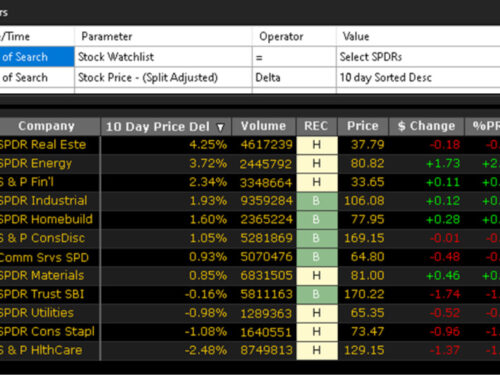THE POWER OF 1.40 AND 1.20.
Written by: Robert and Russell Markham
Did you just read the title of this week’s Essay and scratch your head? Cryptic, right? Not really. Let me explain; these two numbers will make a lot of sense shortly.
We all know the power of buying those top VST stocks (our master indicator, scored on a scale of 0.00-2.00) in a rising market. When looking at top scoring VST stocks, not all stocks are the same. VST, factors in the fundamentals and technicals of all the stocks we track and ranks them on a scale of 0.00-2.00. The higher above 1.00 the better.
This brings me to the first number in that headline: 1.40. If you can find VST stocks with a score of 1.40 or better, you know that these have a very good combination of fundamentals and technicals and are doing something special. A score of 1.40 is a very special score in Australia and across all the other countries that we analyse. You will not find too high of a percentage of VST scores greater than or equal to 1.40. A quick scan across the US and Australia markets noted Australia has 9 stocks with a VST of 1.40 or higher and the US has 77 (as of 8 March 2021). Out of interest, between Canada, Europe and the UK, there were a further 26 stocks where VST >= 1.40. To put this into context, out of all the stocks we analyse around the world with VectorVest (15,369 as of 8 March 2020), only 112 stocks had a VST score of 1.40 or higher. That equates to less than 1% of all stocks! That is how you make money; you find the best of the best. The top 1%!
Of the VST stocks that meet the magical 1.40 score, I have analysed a bit further. VST is made up of Relative Value, RV (looking at the long-term potential of a stock on a scale of 0.00-2.00), Relative Safety, RS (looking at the consistency and reliability of a stock on a scale of 0.00-2.00) and Relative Timing, RT (looking at the short-term price momentum of a stock also on the same scale). What I have noticed with some top VST stocks, is that some of them have very high RT scores of 2.00 or very close to that number. As such, a high RT score can push up that VST score since VST is a combination of RV, RS and RT.
I got thinking and experimented in filtering stocks with a VST score of 1.40 or higher, but also ensuring that the RS score was at least 1.20! There is that second number, 1.20 per the title of this Essay. What if I were to find VST stocks with a score of at least 1.40 where RS was at least 1.20. This would ensure that if a stock did make the magical 1.40 VST score, that it had very solid financials behind it.
I thought this would be an interesting way to screen and see how these very special VST stocks stack up. As of 8th March, only 4 stocks met these criteria. If I go to the last Confirmed Up (C/Up) on the 11 of November 2020, only 3 stocks met these criteria. And if I go back to the C/Up prior to that on the 20 of May 2020, only 8 stocks met that criteria. The question then becomes, how did these stocks stack up?
I ran a QuickTest to see the raw performance (no risk or money management rules) from a Confirmed Up (C/Up) to the next Confirmed Down (C/Dn) and I get the following:
20 May 2020 – 29 October 2020: 43.25%
11 November 2020 – 24 February 2021: 30.16%
Wow! But what about prior dates going back in time. This is where BackTester comes into play. BackTester gives you that edge to stress test, design and perfect your trading plans. You can then turn this into reality once you commit to following your trading plan.
In the video below, I have stress tested the VST >= 1.40 and RS >= 1.20 stocks going all the way back to 2012. I experimented with the different Market Timing signals and settings. The BackTest result is a very impressive portfolio that averaged over 25% returns a year since 2012 with very reasonable draw down and number of trades.
Please CLICK HERE to see the video on this write-up!








Hi Russell,
I found this super interesting.
Thanks
Les Vick